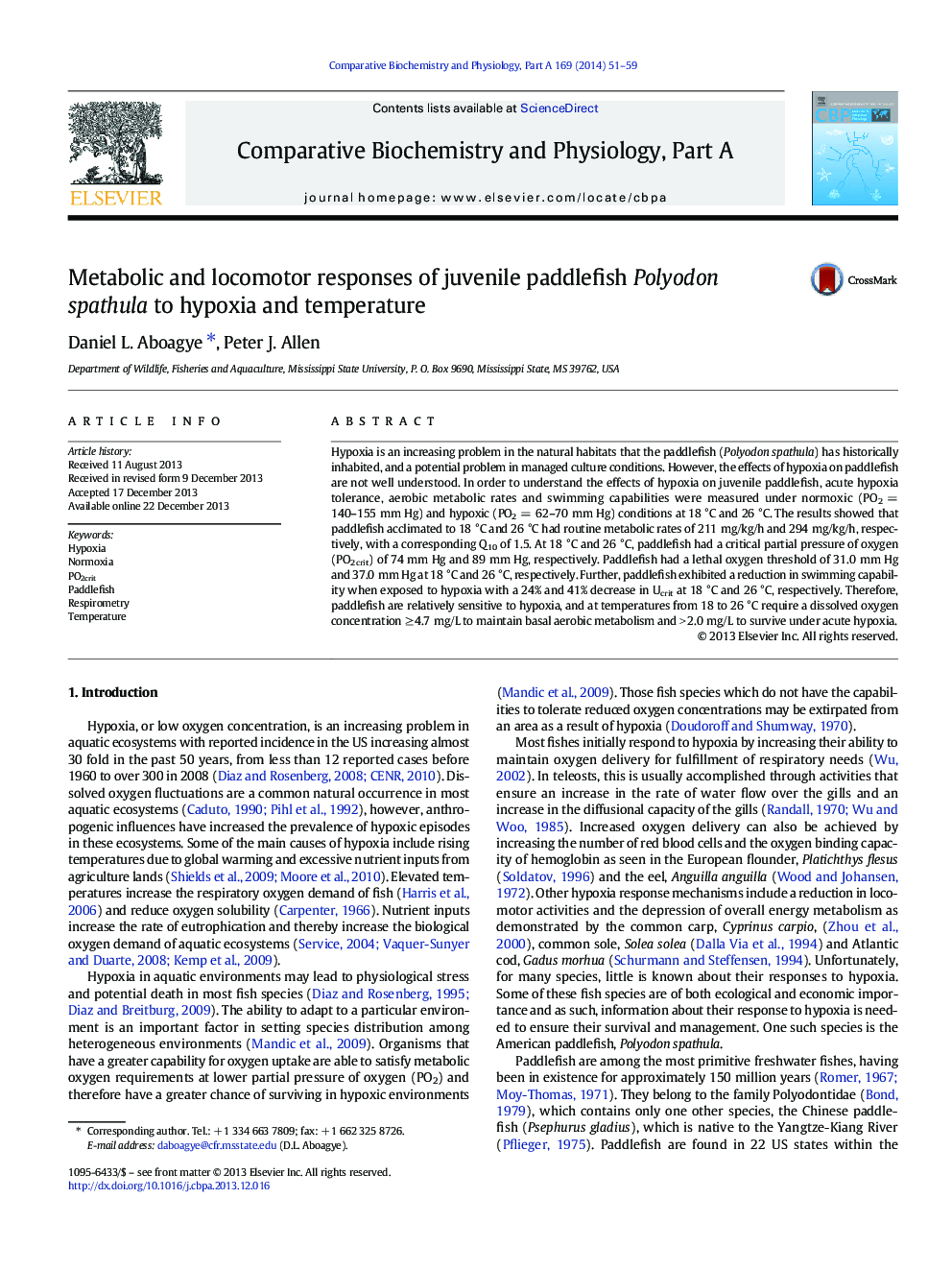| Article ID | Journal | Published Year | Pages | File Type |
|---|---|---|---|---|
| 1972277 | Comparative Biochemistry and Physiology Part A: Molecular & Integrative Physiology | 2014 | 9 Pages |
Hypoxia is an increasing problem in the natural habitats that the paddlefish (Polyodon spathula) has historically inhabited, and a potential problem in managed culture conditions. However, the effects of hypoxia on paddlefish are not well understood. In order to understand the effects of hypoxia on juvenile paddlefish, acute hypoxia tolerance, aerobic metabolic rates and swimming capabilities were measured under normoxic (PO2 = 140–155 mm Hg) and hypoxic (PO2 = 62–70 mm Hg) conditions at 18 °C and 26 °C. The results showed that paddlefish acclimated to 18 °C and 26 °C had routine metabolic rates of 211 mg/kg/h and 294 mg/kg/h, respectively, with a corresponding Q10 of 1.5. At 18 °C and 26 °C, paddlefish had a critical partial pressure of oxygen (PO2crit) of 74 mm Hg and 89 mm Hg, respectively. Paddlefish had a lethal oxygen threshold of 31.0 mm Hg and 37.0 mm Hg at 18 °C and 26 °C, respectively. Further, paddlefish exhibited a reduction in swimming capability when exposed to hypoxia with a 24% and 41% decrease in Ucrit at 18 °C and 26 °C, respectively. Therefore, paddlefish are relatively sensitive to hypoxia, and at temperatures from 18 to 26 °C require a dissolved oxygen concentration ≥ 4.7 mg/L to maintain basal aerobic metabolism and > 2.0 mg/L to survive under acute hypoxia.
